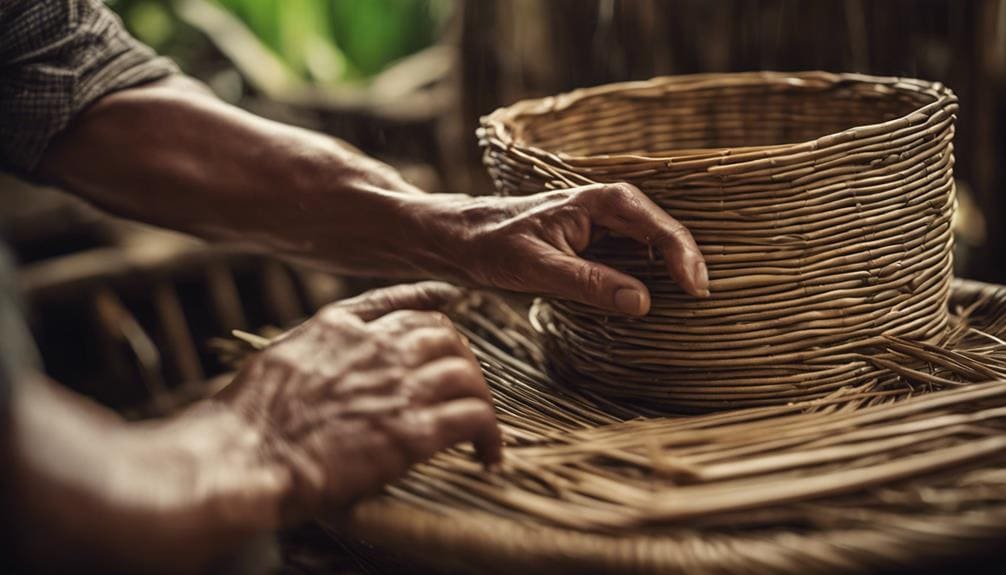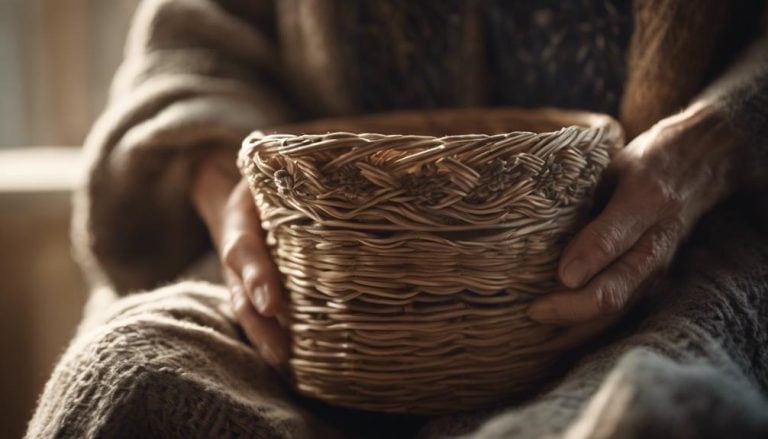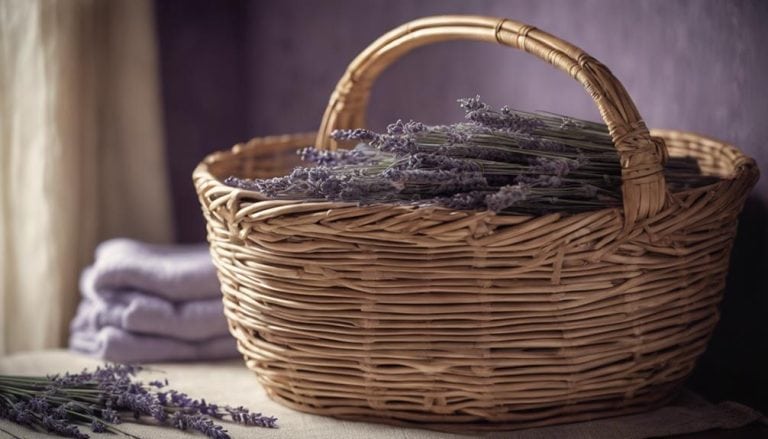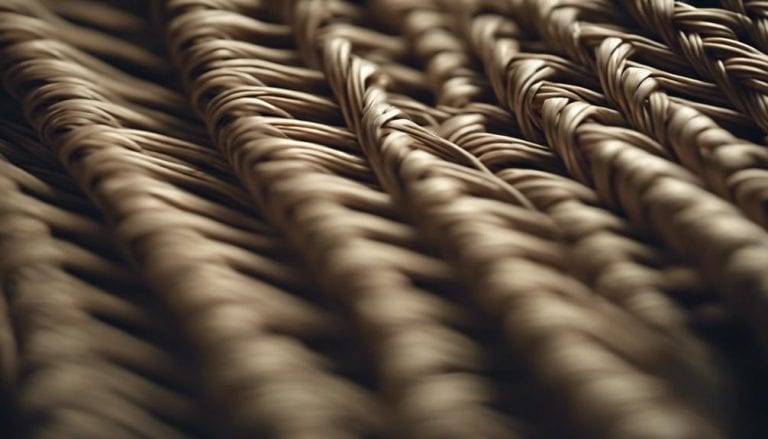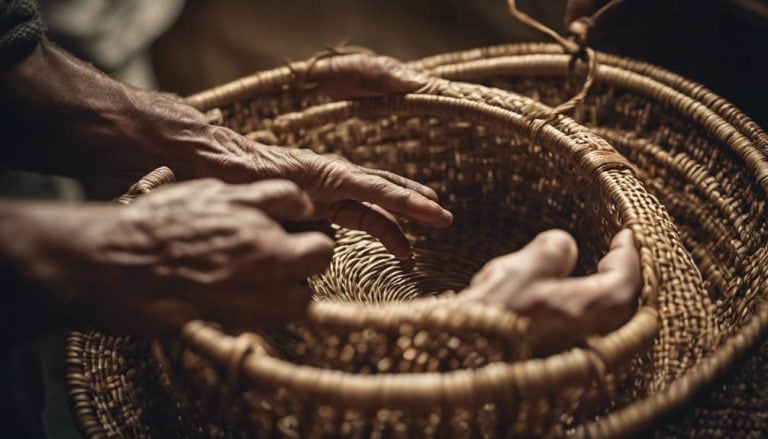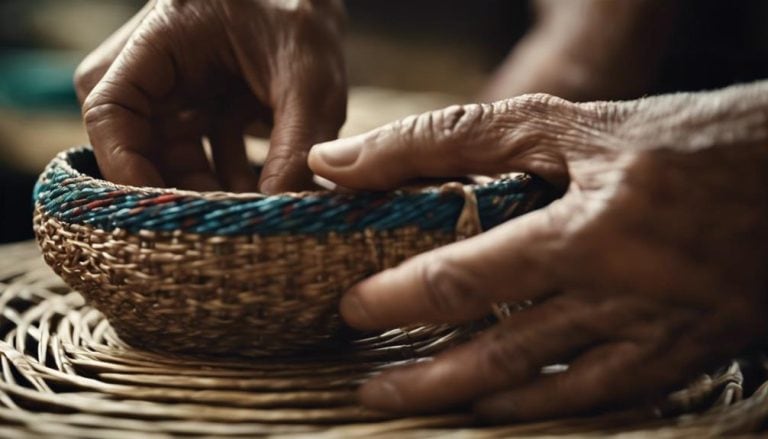Basket Weaving: Maintaining Rattan and Reeds
Did you know that properly maintaining rattan and reeds can significantly extend their lifespan for basket weaving projects? With the right care and storage, these materials can last indefinitely, ensuring the longevity and quality of your baskets.
But what are the best techniques for maintaining rattan and reeds? How can you prevent damage and keep them in optimal condition? In this discussion, we'll explore the importance of maintenance, share tips for cleaning and preserving these materials, and highlight common mistakes to avoid.
So, if you're looking to enhance your basket weaving skills and make your creations last, keep reading for valuable insights and practical advice.
Key Takeaways
- Proper maintenance and storage in a moderate environment are essential for the longevity and quality of rattan and reeds used in basket weaving.
- Regular cleaning and removal of dirt, dust, and mildew are necessary to prevent deterioration and damage.
- Soaking reeds briefly before weaving for pliability, but avoiding prolonged soaking to prevent issues like sliminess and mold.
- Thoroughly drying the materials after cleaning and soaking is crucial to prevent mold growth and maintain their shape.
Importance of Maintenance for Rattan and Reeds
Proper maintenance of rattan and reeds is essential for ensuring their longevity and preserving the quality of these valuable basket weaving materials. As an experienced basket weaver, I understand the importance of regular maintenance in preventing the deterioration of rattan and reeds. These materials are natural and can be susceptible to damage if not properly cared for.
One key aspect of maintenance is proper storage. Rattan and reeds should be stored in a moderate environment, away from extreme temperatures and humidity. Exposure to excessive heat or moisture can cause these materials to weaken and become brittle over time. By storing them in a controlled environment, we can extend their lifespan and maintain their integrity for weaving projects.
Regular cleaning is another crucial maintenance practice. Removing dirt, dust, and potential contaminants from rattan and reeds is essential in preserving their quality. This can be done by gently wiping them with a soft cloth or using a mild cleaning solution. Avoid using harsh chemicals or abrasive materials, as they can damage the fibers and affect the overall strength of the materials.
Tips for Maintaining Rattan and Reeds in Basket Weaving
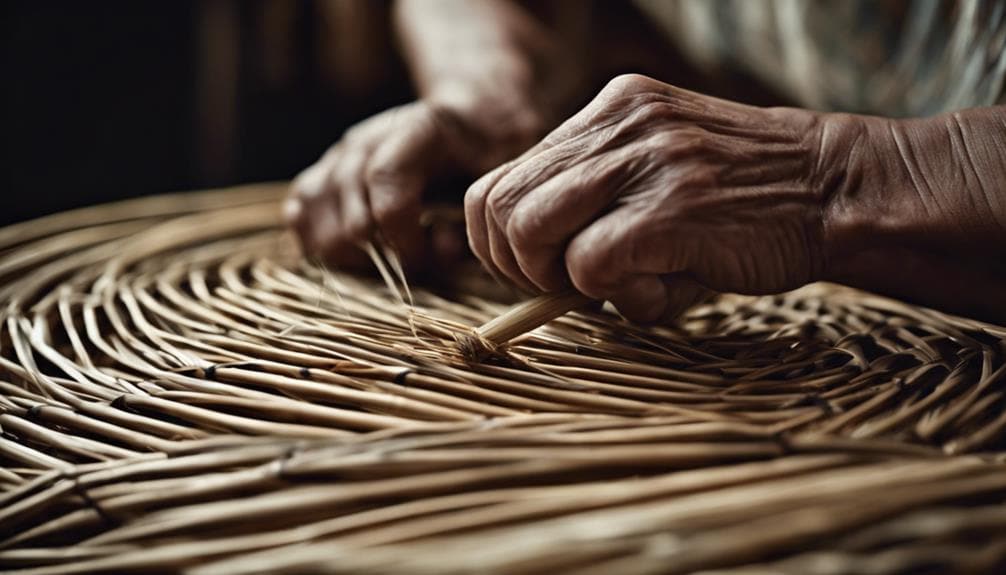
To maintain the longevity and quality of rattan and reeds in basket weaving, it's important to follow a few key tips for proper maintenance. First and foremost, it's crucial to properly store rattan and reeds in a moderate environment. This helps prevent damage and ensures that they remain in good condition for future use.
Additionally, before weaving, it's recommended to soak reeds in water for about 15 minutes. This makes them more pliable and easier to work with during the weaving process.
While soaking reeds is beneficial, it's important to avoid leaving them soaking for extended periods. This can cause issues such as sliminess and mold growth, which can ruin the reeds and affect the quality of the woven baskets. Therefore, it's best to soak them for the recommended time and then remove them promptly.
In order to keep baskets clean and well-maintained, it's advisable to rinse them with a garden hose or in the bathtub. This helps remove any dust, dirt, or debris that may have accumulated on the surface. Additionally, if you notice any mildew on the reeds, you can soak them in a mild bleach water solution. This will effectively remove the mildew and prevent further damage.
Cleaning Techniques for Rattan and Reeds

When it comes to cleaning rattan and reeds, a garden hose or bathtub can be used for effective removal of dirt and debris. I've found that using a garden hose with a gentle spray attachment works well, as it allows me to thoroughly rinse the rattan and reeds without causing any damage. If I'm working with smaller pieces, I prefer using the bathtub, as it provides a controlled environment for cleaning.
For cleaning flat reed and round reed, I recommend soaking them in warm, soapy water for about 15 minutes. This helps loosen any dirt or grime that may have accumulated on the surface. After soaking, gently scrub the reeds with a soft brush to remove any remaining debris. Rinse them thoroughly to ensure all soap residue is removed.
In cases where mildew has formed on the reeds, I suggest soaking them in a mild bleach water solution. This helps eliminate the growth and prevents further damage. However, it's important to be cautious when using bleach, as it can weaken the reeds if used excessively.
After cleaning, it's crucial to allow the rattan and reeds to dry completely before storing them. I recommend avoiding plastic storage containers, as they can trap moisture and cause the reeds to become moldy. Instead, opt for breathable storage options that allow for proper air circulation.
Preventing Damage to Rattan and Reeds in Basket Weaving

After thoroughly cleaning rattan and reeds, it's essential to take preventive measures to ensure their longevity and prevent damage during the basket weaving process. Proper storage is crucial to maintaining the quality of rattan and reeds. It's recommended to store them in a moderate environment, away from extreme temperatures and humidity. This helps prevent the material from becoming brittle or moldy, which can lead to breakage during weaving.
Before beginning the weaving process, reeds should be soaked for about 15 minutes. This soaking makes them more flexible and easier to work with. However, it's important not to leave the reeds soaking for extended periods, as this can cause issues like sliminess and mold growth. Once the reeds have been soaked, they should be thoroughly dried before storage. Drying the reeds ensures that they maintain their quality and prevents any damage that may occur from moisture.
Storing and Preserving Rattan and Reeds
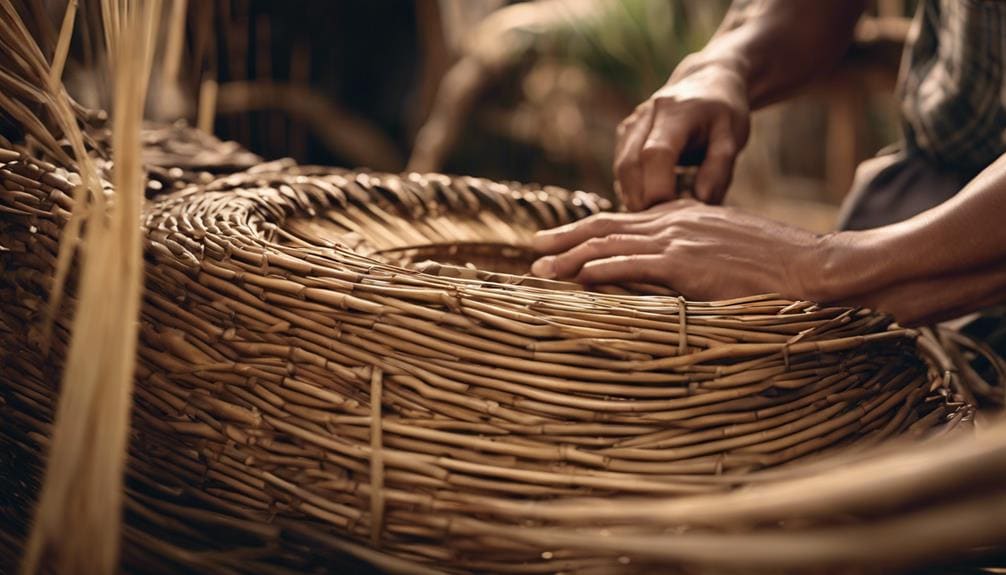
For optimal storage and preservation of rattan and reeds, it's essential to create a suitable environment that will prevent damage and maintain their quality. As experienced weavers, we understand the importance of proper storage techniques to ensure that our materials are always in the best condition for weaving.
Here are some key tips for storing and preserving rattan and reeds:
- Store rattan and reeds in a moderate environment: Extreme temperatures and humidity can cause these materials to warp or become brittle. It's important to find a storage area with stable conditions to prevent damage and ensure their longevity.
- Thoroughly dry the materials before storage: Moisture can lead to mold growth and mildew formation, which can ruin the materials. Before storing rattan and reeds, make sure they're completely dry to prevent any potential damage.
- Avoid extended soaking: While soaking reeds before use can enhance their flexibility, it's important to avoid prolonged soaking. Extended soaking can result in sliminess and promote mold growth. Instead, soak them for a short period of time to achieve the desired level of flexibility.
- Mildew removal: If you notice mildew on your reeds, it's crucial to address it immediately. Soak the affected reeds in a mild bleach water solution to remove the mildew and preserve the quality of the materials.
Common Mistakes to Avoid When Maintaining Rattan and Reeds
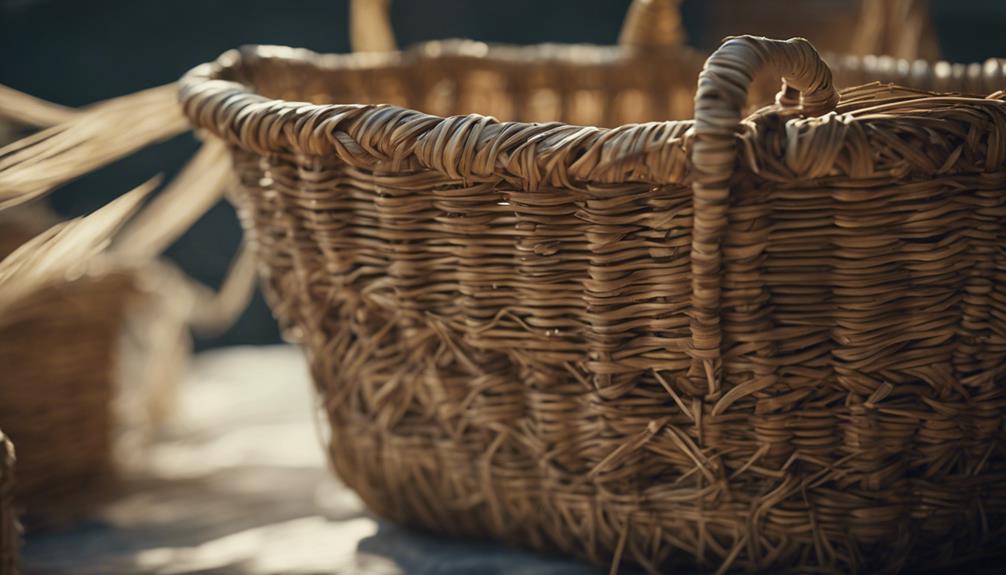
To ensure the proper maintenance of rattan and reeds, it's crucial to avoid common mistakes that can lead to damage and deterioration of these materials. As experienced weavers, we understand the importance of weaving all twelve reed spokes in each row to create a sturdy and balanced structure for our baskets.
One common mistake to avoid is failing to weave all twelve spokes, as this can result in weak spots and an unstable base. Additionally, it's important to keep the reeds clean and free from mold, mildew, and pests. Regularly inspect the reeds for any signs of these potential issues and take immediate action to prevent further damage.
When storing rattan and reeds, it's essential to hang the reed materials rather than laying them flat. This helps maintain their natural shape and prevents any bending or warping. Furthermore, avoid exposing rattan and reeds to extreme temperatures and high humidity levels, as this can cause discoloration, brittleness, and overall deterioration.
Frequently Asked Questions
How Do You Preserve Reed Baskets?
To preserve reed baskets, I ensure they are stored in a moderate environment to prevent damage. I also clean them with a mild bleach water solution if needed. Thorough drying before storage is crucial to prevent mold growth.
Does Basket Reed Go Bad?
Yes, basket reed can go bad if not stored properly. Signs of deteriorating reed include brittleness and mold. To revive old reed baskets, soak the reed before weaving. Avoid storing in plastic and thoroughly dry before storing.
How Long to Soak Reeds for Basket Weaving?
I usually soak reeds for basket weaving for about 5 to 10 minutes in warm water. This makes them flexible and easier to work with. It's important to avoid soaking too many at once to prevent premature drying.
How Do You Protect Wicker Baskets?
To protect wicker baskets, I keep them away from sunlight, apply clear lacquer, and store them indoors. Regular cleaning with a soft brush or vacuum helps prevent deterioration. Avoid overloading to maintain their longevity.
Conclusion
In conclusion, maintaining rattan and reeds is crucial for the longevity and quality of basket weaving materials. By following proper storage techniques, soaking reed before weaving, and regularly cleaning and reshaping baskets, we can ensure the success of our projects.
However, it's important to be aware of common mistakes and avoid them to prevent damage. With these maintenance practices, we can continue to enjoy the beauty and functionality of rattan and reeds in our basket weaving endeavors.

